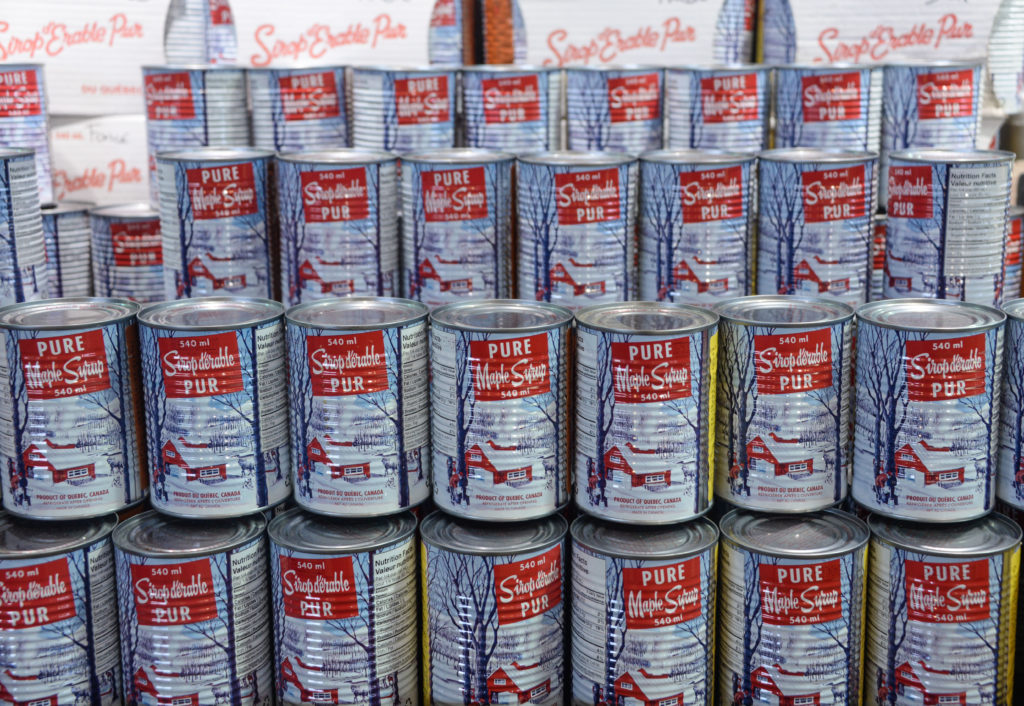After a recent trip to Montreal I walked away thinking that Canadians couldn’t get enough of maple. Whether at a market, bakery, cafe or restaurant I saw such treats as maple lollipops, cookies, doughnuts, pies and cakes. At one coffee shop I even added maple sugar to my maple latte. Maple’s popularity and prevalence should surprise no one. Canada produces over 70% of the world’s pure maple syrup. Over 90% comes from the province of Quebec, where Montreal is located.
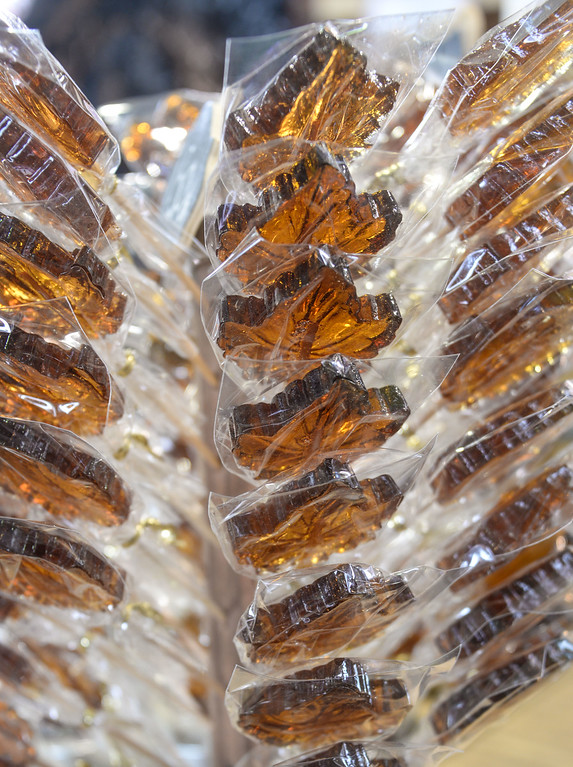
Maple leaf lollipops
Back at home pure maple sugar and syrup aren’t as easy and inexpensive to obtain. At my local farmer’s market I will pay $9 for five ounces of maple sugar. At my neighborhood grocery store I’ll fork over $12 for eight ounces of this sugar. Online it’s still fairly pricey. Plus, I have to wait for it to be delivered. Since I’ve had a sinus infection and felt unmotivated to grocery shop, I decided to make my own maple sugar and maple sugar cookies. Yeah, I felt too lousy to go out but I didn’t feel too terrible to put syrup in a pan and make sugar. Here’s how I did it.
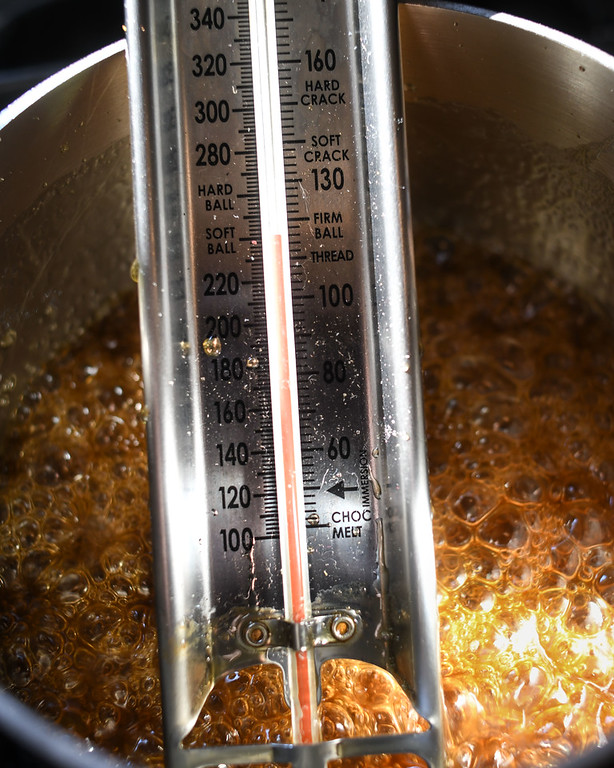
Maple syrup bubbling away, inching up toward 265/hard ball.
How to make maple sugar
To make maple sugar, I poured 1 cup of pure maple syrup into a heavy bottomed saucepan. I then brought the syrup to a boil over medium high heat. Once the syrup began to bubble, I inserted a candy thermometer inside the saucepan; the syrup had to reach 265 degrees or “hard ball” on the thermometer before I could remove the pan from the heat. As the syrup grew hotter, I stirred it with a wooden spoon to distribute the heat and stop it from sticking to the pan.
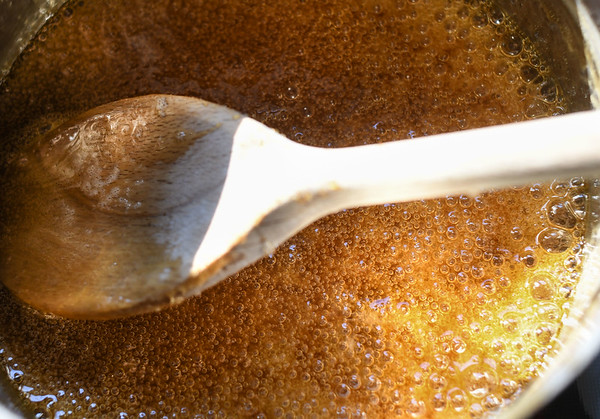
Time to take the maple syrup off the burner.
When the candy thermometer read 265/hard ball, I pulled the pan from the burner and continued to stir the bubbling syrup. Within minutes the syrup went from a frothy liquid to granules of sugar. I scraped the sugar from the pan and measured the amount made. Out of 1 cup (16 tablespoons) of maple syrup, only three tablespoons of liquid had evaporated, leaving me with 13 tablespoons or a little over 3/4 cup of maple sugar. Depending on the quality of syrup used, the maple sugar may reduce down to half the original amount of syrup.
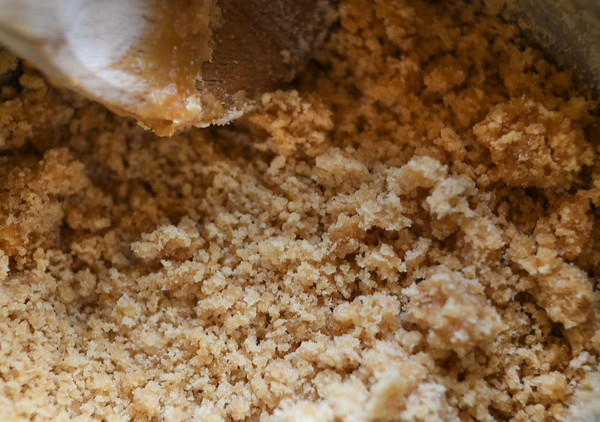
Stirred vigorously, the boiled maple syrup turns into sugar.
Since the sugar was rather lumpy, I poured it into the bowl of my food processor and blitzed it until smooth. Total time it took to make maple sugar? Fifteen minutes. That’s a lot less time than it would have taken to go out and buy it.
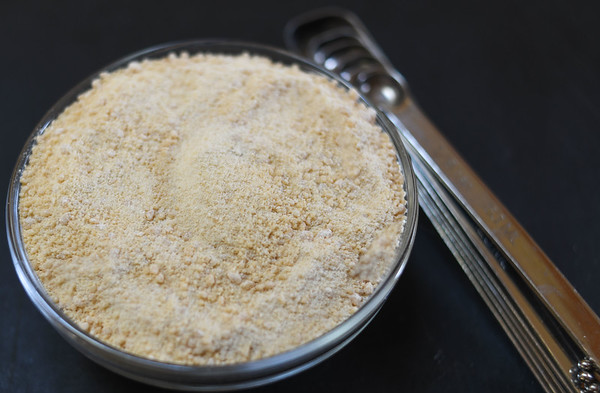
After being run through the food processor, the maple sugar is much smoother and lighter.
How hard was it to clean the sugar-coated saucepan? Easy peasy. I poured water into the pan, brought the water to a boil and watched all the sugar dissolve. After that I dumped out the sugary water and put the pan in the dishwasher. At this point I could make maple sugar cookies. Or I could take a nap. I chose the latter. Tune in next week for delicious maple sugar cookies. Until then, try a hot cup of coffee or tea sweetened with your own maple sugar.
